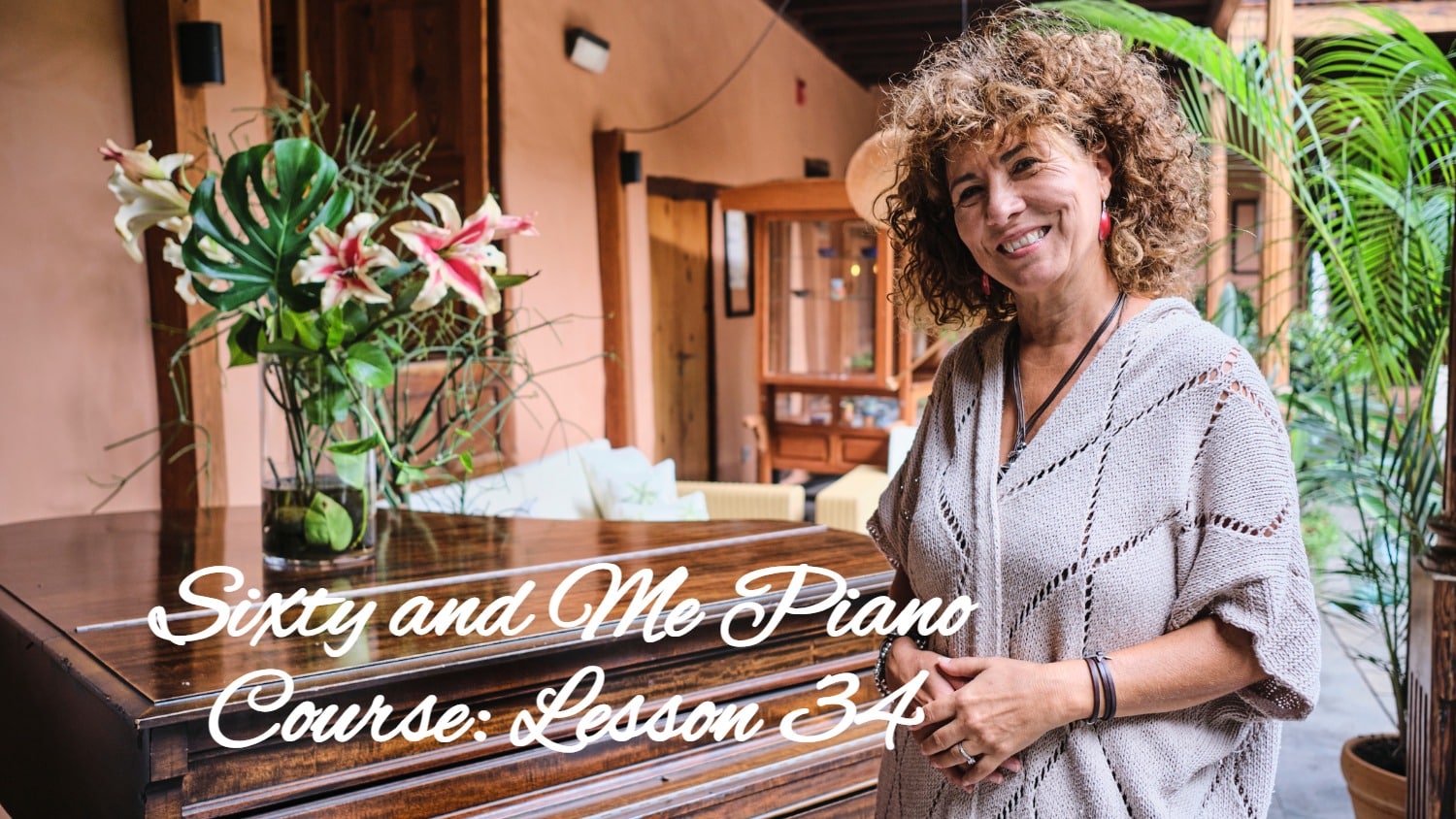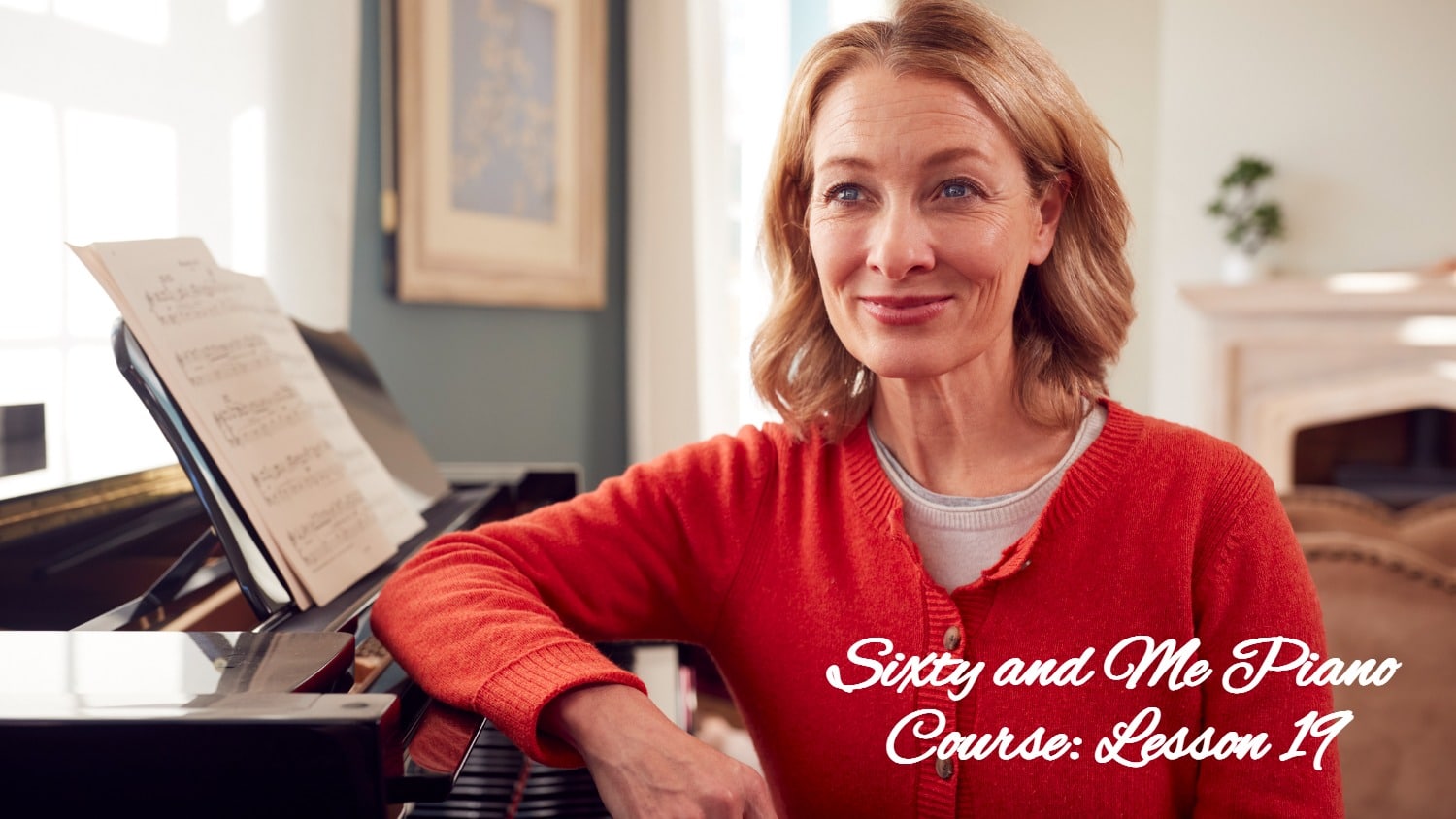
Piano Lesson 20: Repeats and Happy Endings
It is Lesson 20 today! We will be playing Vivialdi’s “Spring,” and studying the repeat signs and multiple endings on p.63 in our Upper Hands Piano, BOOK 1.
[NOTE: If you are just joining us for the first time, you can find my previous Sixty and Me Free Piano Lessons on my Author page. You can join our lessons any time and move at your own pace!]
20.1 Repeat Signs and Multiple Endings
When our modern music notation system was evolving in the 17th Century, composers were understandably looking for ways to save ink, paper, and their sore hands, by using symbols to indicate repeated sections. Repeated sections are indicated with double bars and double dots || : :|| .
Sometimes repeats indicate multiple endings, which means that the first time you play a passage you play the 1st ending, and the 2nd time you play that same passage, you jump to the 2nd ending.
If you are a first-time beginner and have never encountered repeat signs and multiple endings, watch my video explaining the symbols and the structure. Repeats and endings can be tricky, so don’t worry if it takes a while to fully grasp the structure. Hopefully you will hear some happy endings once the symbols make sense.
20.2 “Spring”from The Four Seasons by Antonio Vivaldi
Here’s a demonstration of Vivaldi’s “Spring,” with both of the repeats and the 1st and 2nd endings. Remember Dashing Dora? You can see her at the bottom of the page, reminding you that Allegro means to play fast.
However, always start learning your piece slowly, making sure your rhythm is smooth and constant, without hesitations, before speeding up. The f-p you see at the beginning of the first and third lines tells you to play these passages forte (loudly) the first time through, and piano (softly) the second time through.
20.3 Exercise #4 in C and G, Appendix v
This is a demonstration of your new exercise! It is Exercise #4, which you will find towards the back of the book, in Appendix v. This week you will play Exercise #4 in C and G. The fingering will be the same for all 12 keys.
Exercise #4 ends with a Major Triad, then moves to an Augmented Triad, then back to the Major Triad. Notice that Augmented chords raise the top note (also called the 5th, because it’s the 5th note of the pentascale) one half step up (to the right). Play Exercise #4 with each hand in C and G for these two weeks.
Passion Practice!
- Exercise #4 in C and G with each hand. Watch my demonstration video above (20.3) to make sure you are playing the correct rhythm in ¾ time.
- Play Spring on p.63, slowly at first, working up towards an Allegro tempo, or whatever tempo you can play comfortably and smoothly, with time and practice.
- Chord Calisthenics #3 – Play the major/minor/major triads in E-flat, B-flat and F, and review the chords in all 12 keys.
- Review Down in the Valley, (scroll down on the page to click on and print the song) or any pieces in Book 1 that you enjoy playing.
Let’s Have a Conversation:
Why do you think composers like us to repeat certain passages of their music? Do you enjoy playing/hearing these phrases twice? In Vivaldi’s “Spring,” how are the repeated phrases different the 2nd time? Does the piece evoke feelings of Spring for you?
Tags Piano Lessons







Hi Friends, here is a link to listen to an orchestra play Vivaldi’s Spring: https://www.youtube.com/watch?v=e3nSvIiBNFo